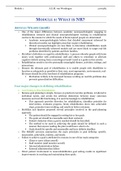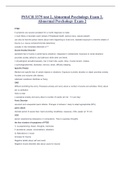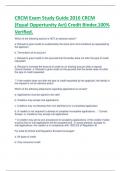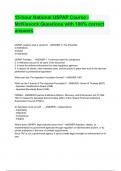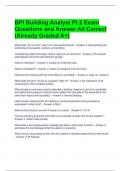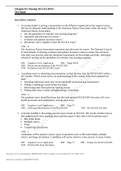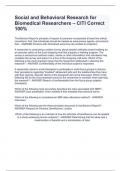Samenvatting
Summary Everything needed to complete quiz 1 'Neuropsychological Rehabilitation' UVT
- Instelling
- Tilburg University (UVT)
All the information needed to complete quiz 1 of the course 'Neuropsychological Rehabilitation' at Tilburg University. This summary contains all the articles and book chapters, and also the most important information mentioned in the informative video's.
[Meer zien]
